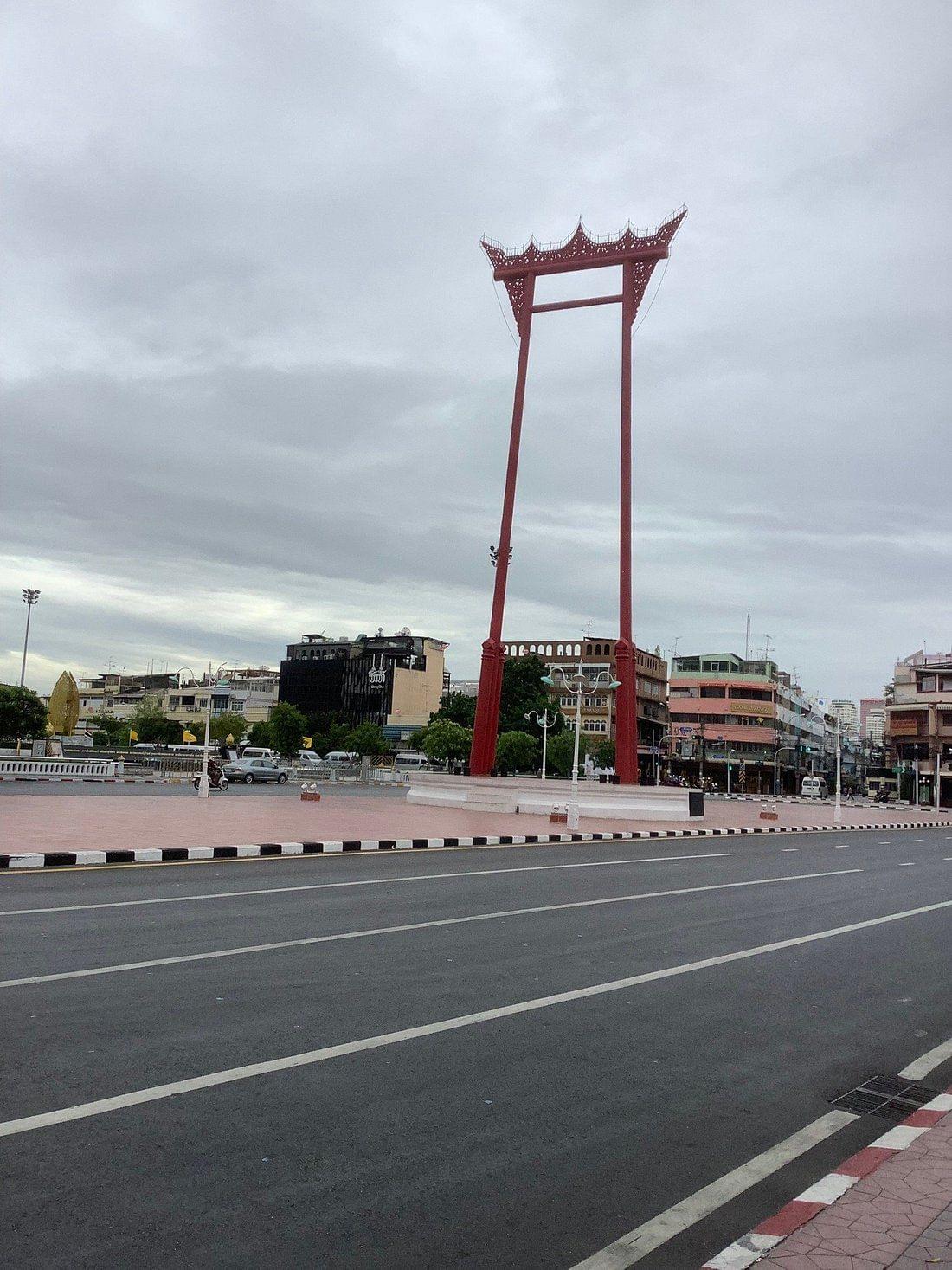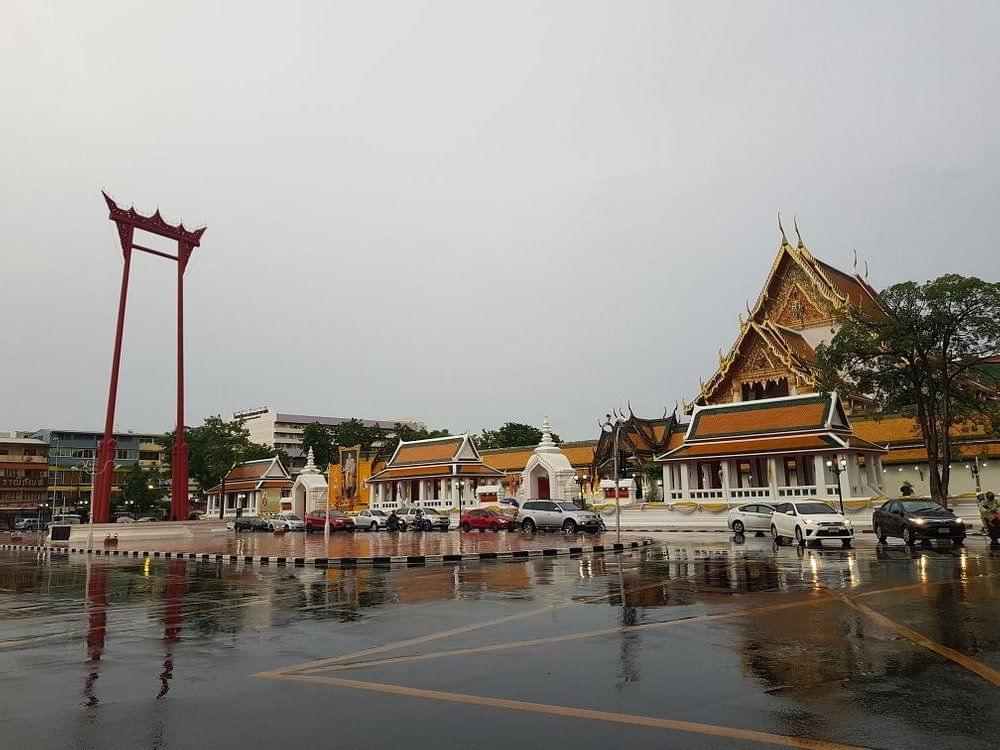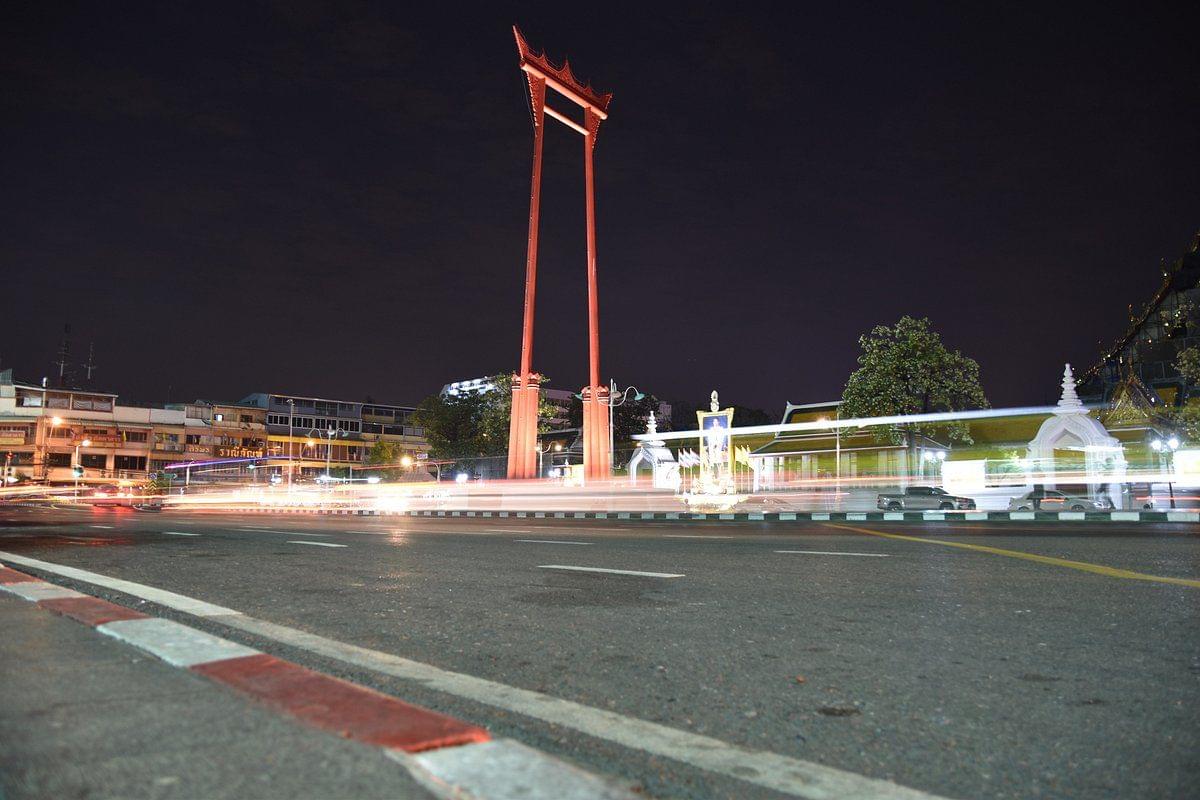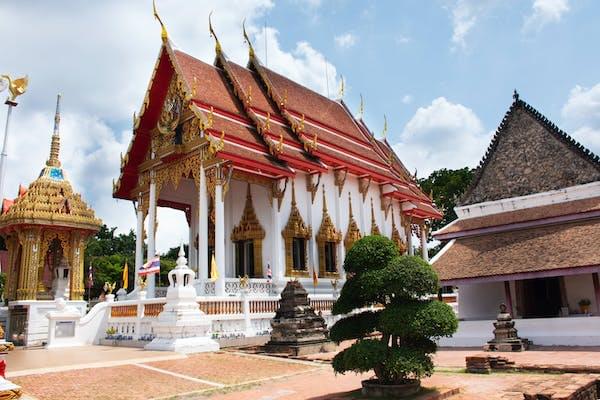
- Home
- Attractions
- Bangkok
- Giant Swing, Bangkok: An Iconic Landmark of Bangkok's Heritage
Giant Swing, Bangkok: An Iconic Landmark of Bangkok's Heritage
Bangkok is the capital city of Thailand and has become a major tourist attraction over the past few decades. The city hosts an ample number of malls and museums striking the perfect balance between a cosmopolitan capital and a cultural heritage city. Bangkok attracts tourists from several different walks of lives. The city has got something in store for every child, every teenager and every adult that sets foot in it. What sets Bangkok apart from most of the other countries’ capital cities, is the importance and respect it gives to its cultural heritage.
One such monument that stands testimony to this fact is the Giant swing in Bangkok. The giant swing is a religious structure which dates back to the late 18th century when it was used in an old Brahmin ceremony. It is interesting to note that the giant swing pays homage to the influence of the Tamil brahmin culture over the local Thai culture. Let’s have a look at some of the highlights of this beautiful tourist attraction and why it warrants some of your precious vacation time. Explore the vibrant culture, breathtaking landscapes, and exotic cuisine with our exclusive Thailand tour packages, offering an unforgettable journey through this enchanting Southeast Asian destination.
Highlights of Giant Swing Bangkok

- The giant swing was originally constructed in the year 1784 opposite a Hindu shrine called Devasthan by king Rama I. The swing has been reconstructed several times after that due to mishaps resulting out of lightning and other fatal accidents
- The timber of the original giant swing (before it got struck by the lightning) have been preserved at the Bangkok National Museum. The original swing is believed to have been made out of teak wood from around six teak trees
- The giant swing was constructed to commemorate a Hindu epic that describes the beginnings of the earth. The two pillars of the swing are supposed to represent the mountains and the circular base is supposed to represent the earth and the seas
- Until 1935, there was an annual swinging ceremony that took place here religiously called the Triyampavai-Tripavai (the name of this ceremony has been derived from the Hindu religious hymns Thiruvempavai and Thiruppavai). This is believed to have been called off due to safety reasons
- It was in the year 2005 that this giant swing along with the adjacent temple Wat Suthat was proposed as a UNESCO world heritage site
- The swing usually has Tamil Hindus in Thailand offering their prayers, but is also a popular tourist attraction and would make a great backdrop for your photographs!
Suggested Read: Best Travel Tips to Thailand
Best time to Visit Giant Swing Bangkok

The swing is open to the public throughout the day, you can often see locals praying here because of the religious significance. You can visit the swing at any time of the day.
There is no entrance fee to visit the giant swing. Explore the vibrant culture, stunning landscapes, and rich history of Thailand with our curated Bangkok package with flight, offering an unforgettable journey filled with adventure and relaxation.
How to Reach Giant Swing Bangkok

The giant swing at Bangkok is located right outside the religious Buddhist temple Wat Suthat. It is a landmark tourist attraction which is easily accessible from the main road.
- Renting a taxi or driving from the Suvarnabhumi airport will take you around 30 minutes via route 7. Although this route has tolls which you might have to bear in mind.
- Taking the public bus or metro will take you around 90 minutes to 1 hour and 40 minutes to reach the swing from the airport.
Attractions Near Giant Swing Bangkok

Wat Suthat
The temple is traditionally known as ‘Wat Suthat ThepWararam’ is one of the selective 10 temples in Bangkok which once served as the royal temple. Interestingly, this temple was also constructed by King Rama I. The temple has constantly been undergoing embellishments by different rulers till the reign of King Rama III. The Buddha image which has been housed inside this temple is said to have been moved from the Sukhothai province. There is an urban legend of a preta (a tall hungry ghost) appearing in front of the temple at night. Sounds spooky? Take a look if you dare!
Sarn Chao Po Seu
This is also called the tiger god shrine in Bangkok. This is a Chinese joss house (a Chinese place of worship where Chinese ancestors and monks are revered). There are deities associated with specific virtues such as God of honesty, God of faith, God of the Sea and so on who are worshipped and admired in both Thai and Chinese cultural traditions. Make a quick stop here if you would like to explore the religious influence of China over Thai culture.
Lan Kon Mueng
Take a refreshing break from your religious tour in and around the giant swing with Lan Kon Mueng, a recreational space just in front of the city hall where you can see the locals gather around and breathe some fresh air. If you are looking for a place where you can relax for a while, jog or take a little stroll around, then this might just be it!
Devasthan
‘Devasthan’ translates to the ‘abode of Gods’. This is the Royal court of Brahmins, which happens to be part of the Royal Thai court. This is a Hindu temple which is revered as the religious centre of Hinduism in Thailand. The temple is owned and maintained by a lineage of priests hailing from a region called Rameswaram in Tamil Nadu, India. Interestingly, the giant swing is believed to have been originally constructed opposite to the Devasthan where the annual swinging ceremony used to take place. You can visit the place to see the influence Hinduism has had over the local Thai culture.
Vishnu Temple
The road near the one housing Wat Suthat has a humble temple of Vishnu which was given to Thailand by India as a token of good relations between the countries. Yet again, the idol of the deity was brought from India. Visit the place to witness a cultural convergence of Hinduism and Buddhism.
FAQs on Giant Swing Bangkok
Is it safe to visit the giant swing?
Yes. The giant swing is well protected and is in a stable condition for tourists to visit.
Is there a dress code at the giant swing?
No. Though it is a religious structure, there is no strict dress code. Although one must pay respect to the locals found worshipping near the swing.
Update your location?



